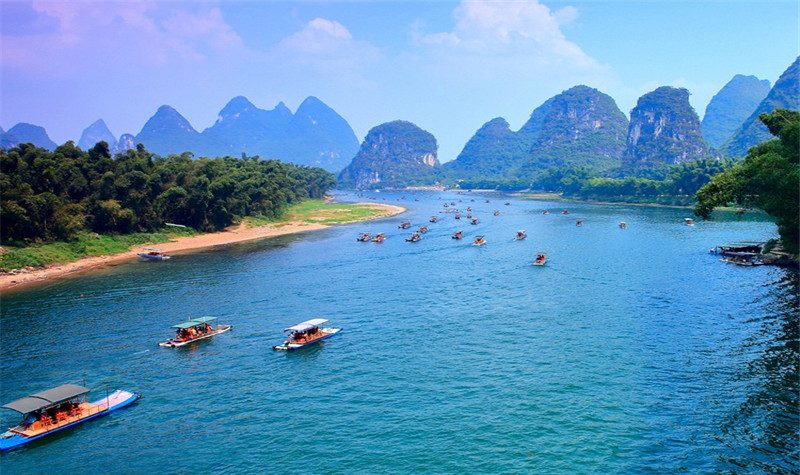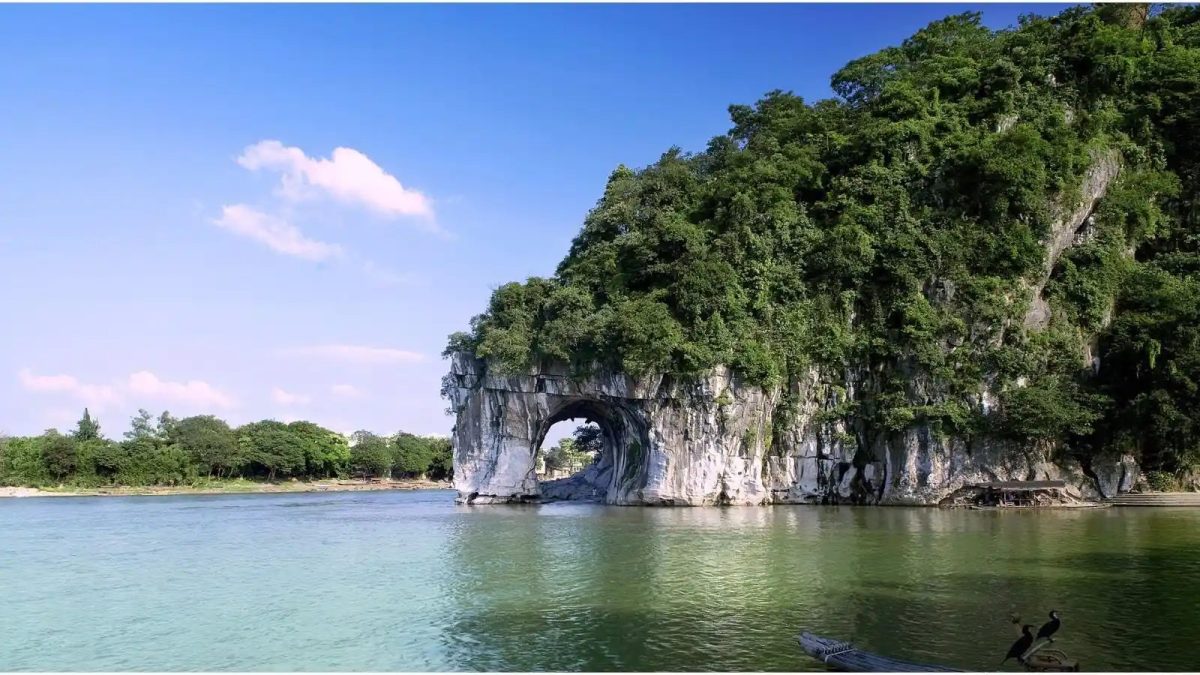Located in China’s Guangxi Zhuang Autonomous Region, Guilin is an ancient city with a long history of more than 2,000 years. The Guilin Mountains are a unique karst landscape, famous for its fantastic natural scenery, and has been praised as “unrivaled in the world for the beauty of its mountains and waters”. Guilin’s landscape is not only a vivid portrayal of traditional Chinese culture, but also a bright pearl of the world’s natural heritage, making it a must-visit destination for travelers who love nature and culture.
Geography and History
Located in southern China, Guilin enjoys a mild climate with four distinct seasons. The karstic wonders here are the result of millions of years of relentless erosion of limestone by water currents, giving rise to countless strange peaks and mysterious caves of various shapes and sizes. Tracing back its history, Guilin’s splendor can be traced back to the Qin Dynasty (214 B.C.), when it was already a bright pearl in southern China. With its unique geographical location, Guilin was once a key node of the ancient “Maritime Silk Road” and a bridge where the cultures of the Central Plains and Lingnan converged.
Guilin Mountains: Nature’s Artistic Creation

The beauty of Guilin mountains is its most dazzling calling card. The peaks of the mountains here are not like the continuous ones in other places, but one by one, standing independently, with thousands of forms, some of which are like living beings, some of which are like silhouettes of people, inspiring endless reveries. The scenery on both sides of the Li River is even more picturesque, the clear water is like a mirror, reflecting the lush mountains, constituting a moving ink scroll. Han Yu, a great poet in Tang Dynasty, once used the phrase “the river is like a green ribbon, and the mountains are like jasper hairpins” to depict the stunning beauty of Guilin, and its charm can be seen.
Elephant Trunk Hill: Guilin’s Iconic Scenery
Elephant Trunk Hill, a landmark attraction in Guilin, is named after its unique shape resembling an elephant’s trunk stretching out to drink. The “Water and Moon Cave” formed naturally between the trunk and the body of the elephant, under the moonlight at night, the river surface shimmers and the scenery is dreamlike. It is not only a paradise for photographers, but also a place where you can climb to the top and enjoy the magnificent view of downtown Guilin and the Li River.
Li River: a flowing wonderland
The Li River is the soul of Guilin mountains. The Li River section from Guilin to Yangshuo is known as the “Hundred Mile Gallery”, along which strange peaks rise, villages are quiet, and buffaloes are leisurely, forming a harmonious idyllic painting. The Li River is a beautiful place to roam on a bamboo raft or boat, especially in the morning or twilight, when the sunlight fills the surface of the river, and the scenery is like a fairyland. The “Nine Horses Painting Mountains” and the “Yellow Cloth Reflection” will mesmerize you and make you forget to come back.
Guilin Rice Noodles: A Feast for the Taste Buds

In addition to the natural scenery, Guilin’s food is equally desirable. Guilin Rice Noodles, an authentic snack with a history of more than 2,000 years, is a mellow and flavorful dish of delicate and smooth rice noodles with special marinade and rich toppings, such as tender beef and pork, as well as sour and refreshing bean curd. Whether it’s breakfast in the morning light or lunch in the afternoon nap, a bowl of steaming Guilin rice noodles will give you a deep appreciation of the unique flavor of Guilin.
Guilin is a tourist paradise that combines natural beauty, deep history and delicious food. Whether it’s the stunning scenery of the Li River, the wondrous landscape of Elephant Trunk Hill, or the tantalizing taste of Guilin Rice Noodles, you will be left with indelible memories. When planning your trip to China, don’t forget to include Guilin in your itinerary, and experience for yourself the beauty of this place known as “the most beautiful place in the world”.
